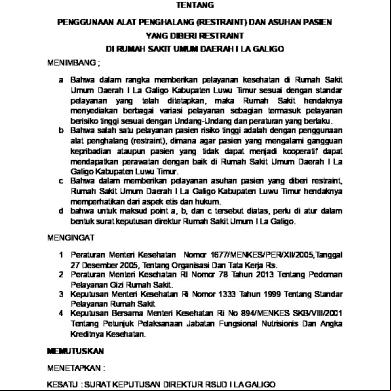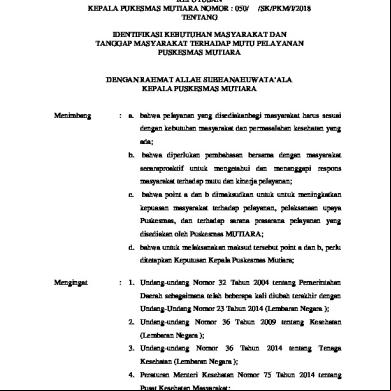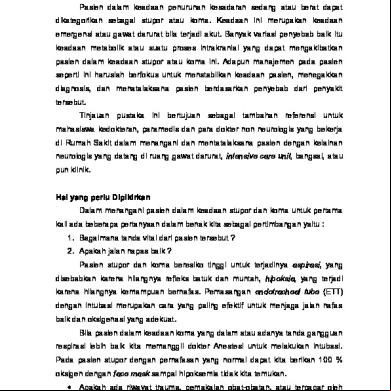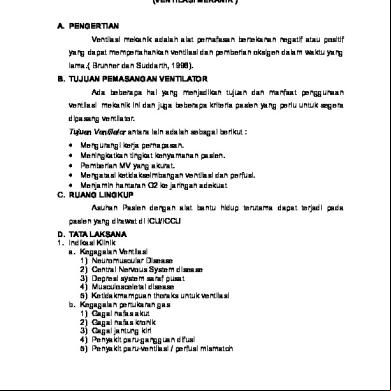5.2.1 Program Evaluation Review Technique Ppt Only.pdf 6w4t50
This document was ed by and they confirmed that they have the permission to share it. If you are author or own the copyright of this book, please report to us by using this report form. Report 3b7i
Overview 3e4r5l
& View 5.2.1 Program Evaluation Review Technique Ppt Only.pdf as PDF for free.
More details w3441
- Words: 383
- Pages: 11
Program Evaluation Review Technique
Course progress Initiating
Planning
Executing
Controlling
Closing
Integration
Scope Time Cost Quality HR Communications Risk Procurement Stakeholder
We are in the planning process group and time & risk management knowledge area
When can PERT be used? Project Task Estimates (In Days) Optimistic Likely Time Pessimistic Time (To) (TL) Time (TP) Dependency
Task #
Task Name
1
Requirements
1
3
5
None
2
Systems Analysis
2
4
7
Task 1
3
Systems Design
1
3
6
Task 2
4
Coding
1
3
5
Task 3
5
Testing
1
2
4
Task 4
Consider a project with these five tasks, stated dependencies and estimates for durations What is the likelihood that the project is going to finish within 15 days? PERT: Program Evaluation & Review Technique
Program Evaluation and Review Technique • Developed by the US. Navy in collaboration with Booz Allen and Hamilton in 1958 • First used on the Polaris submarine project • Later on all defense contractors were mandated to use it • Also used in the construction industry
Program Evaluation and Review Technique • In M we assumed that activity durations are known with certainty • Is that really true? • PERT assumes that each activity duration can range from an optimistic to pessimistic time
Estimation of activity duration
e.g. This activity can take anywhere between 10 hrs. and 70 hrs.
Estimation Activity Durations
A distribution (in this case a beta distribution) can be fitted to the data
PERT
Probabilistic nature of activity durations.
PERT Assumptions TO 4TL TP TE 6
G
C
A
E
B
F
H
D •Assumption 1 –A critical path can be determined by using the mean completion times for the activities –The project mean completion time is determined solely by the completion time of the activities on the critical path.
PERT Assumptions G
C
A
E
B
F
H
D Assumption 2 There are enough activities on the critical path so that the distribution of the overall project completion time can be approximated by the normal distribution (this comes from a statistical theory called Central Limit Theorem)
PERT Assumptions • Assumption 3 • The time to complete one activity is independent of the completion time of any other activity G
C
A
B
E
F
H
D 11
Course progress Initiating
Planning
Executing
Controlling
Closing
Integration
Scope Time Cost Quality HR Communications Risk Procurement Stakeholder
We are in the planning process group and time & risk management knowledge area
When can PERT be used? Project Task Estimates (In Days) Optimistic Likely Time Pessimistic Time (To) (TL) Time (TP) Dependency
Task #
Task Name
1
Requirements
1
3
5
None
2
Systems Analysis
2
4
7
Task 1
3
Systems Design
1
3
6
Task 2
4
Coding
1
3
5
Task 3
5
Testing
1
2
4
Task 4
Consider a project with these five tasks, stated dependencies and estimates for durations What is the likelihood that the project is going to finish within 15 days? PERT: Program Evaluation & Review Technique
Program Evaluation and Review Technique • Developed by the US. Navy in collaboration with Booz Allen and Hamilton in 1958 • First used on the Polaris submarine project • Later on all defense contractors were mandated to use it • Also used in the construction industry
Program Evaluation and Review Technique • In M we assumed that activity durations are known with certainty • Is that really true? • PERT assumes that each activity duration can range from an optimistic to pessimistic time
Estimation of activity duration
e.g. This activity can take anywhere between 10 hrs. and 70 hrs.
Estimation Activity Durations
A distribution (in this case a beta distribution) can be fitted to the data
PERT
Probabilistic nature of activity durations.
PERT Assumptions TO 4TL TP TE 6
G
C
A
E
B
F
H
D •Assumption 1 –A critical path can be determined by using the mean completion times for the activities –The project mean completion time is determined solely by the completion time of the activities on the critical path.
PERT Assumptions G
C
A
E
B
F
H
D Assumption 2 There are enough activities on the critical path so that the distribution of the overall project completion time can be approximated by the normal distribution (this comes from a statistical theory called Central Limit Theorem)
PERT Assumptions • Assumption 3 • The time to complete one activity is independent of the completion time of any other activity G
C
A
B
E
F
H
D 11










